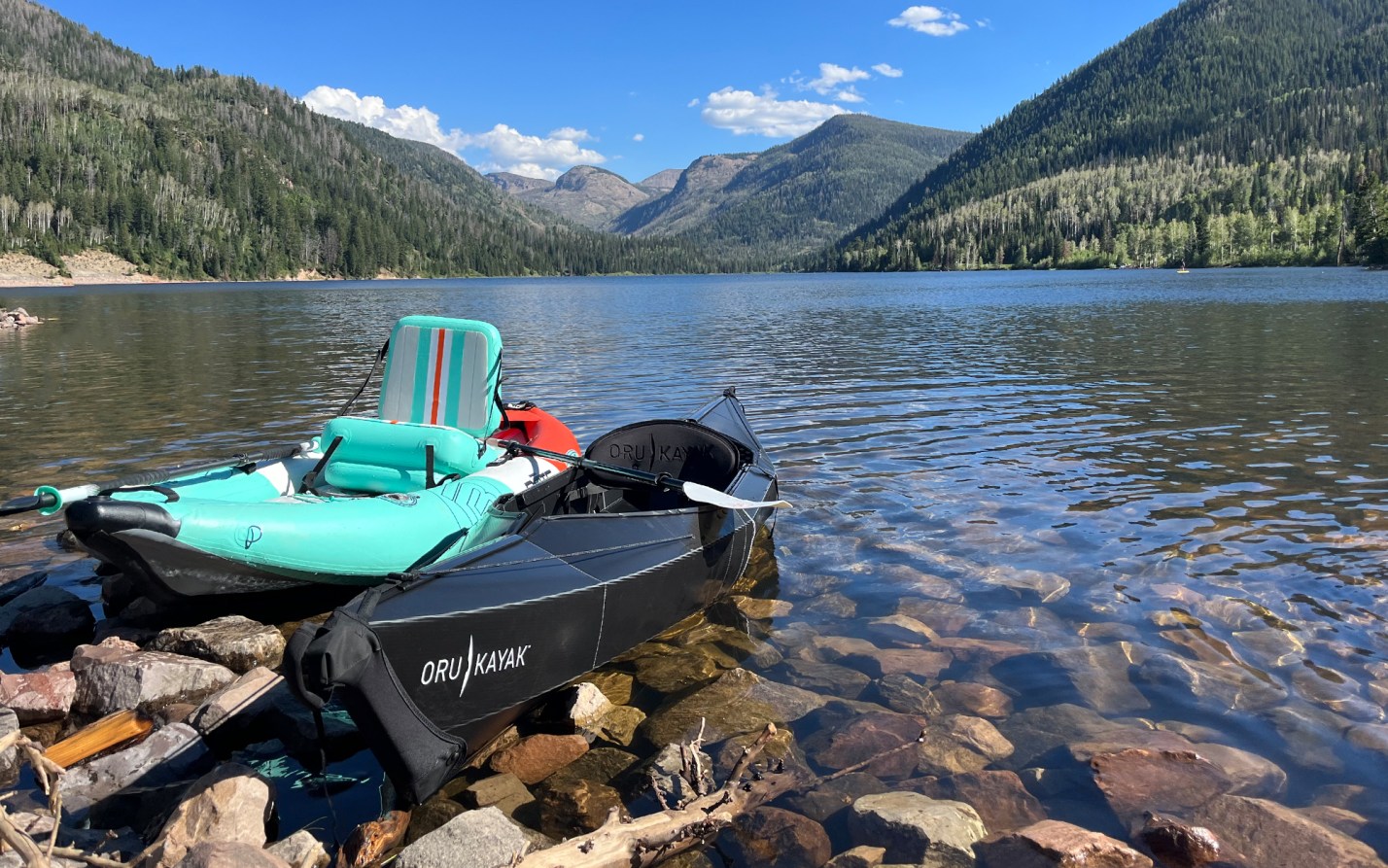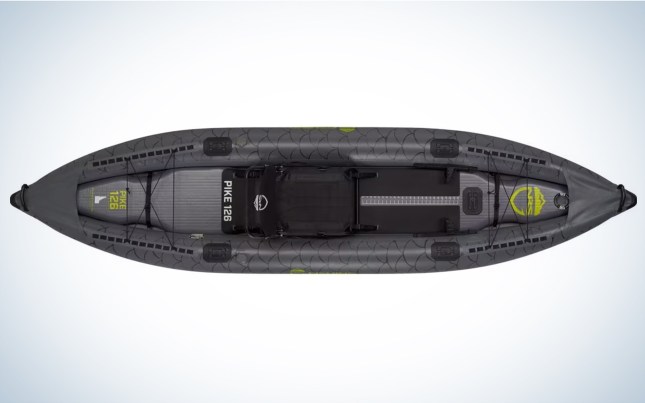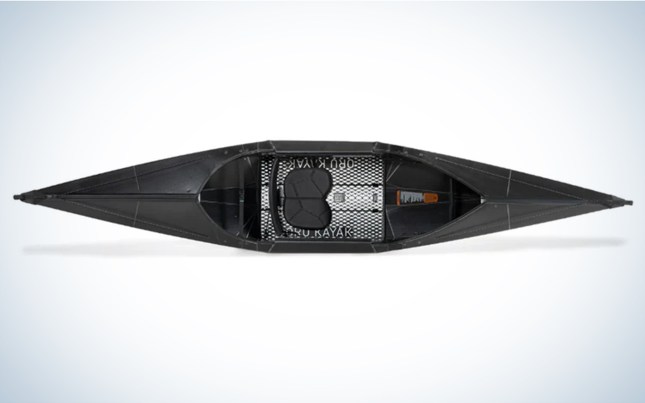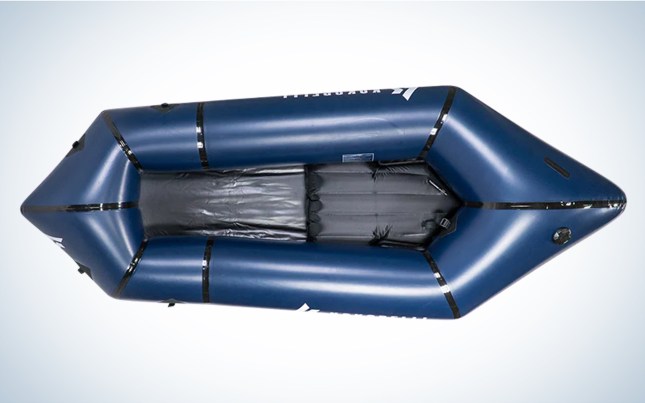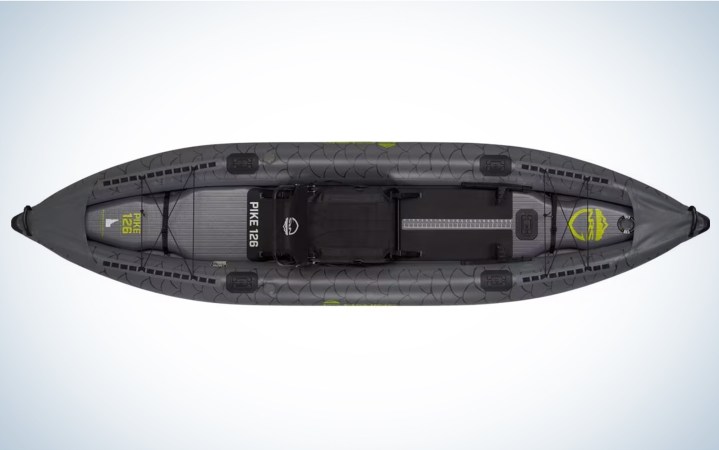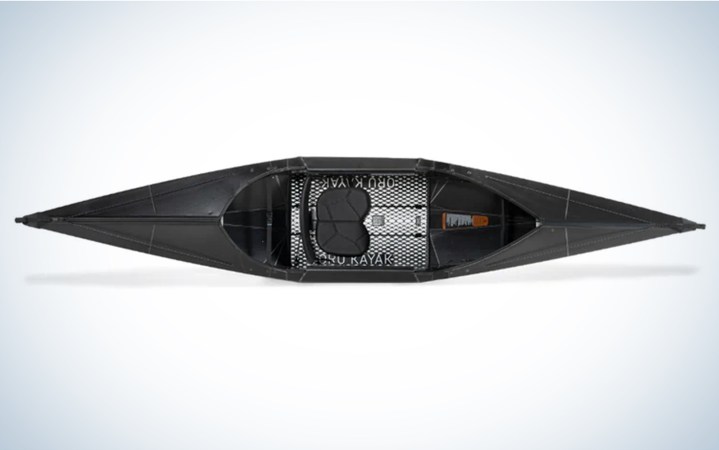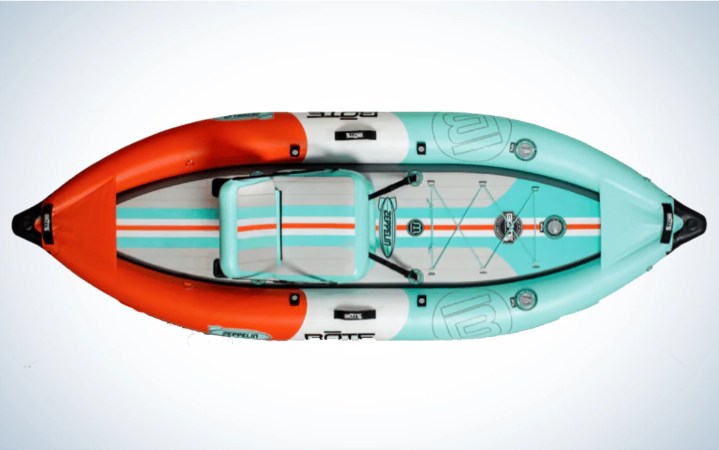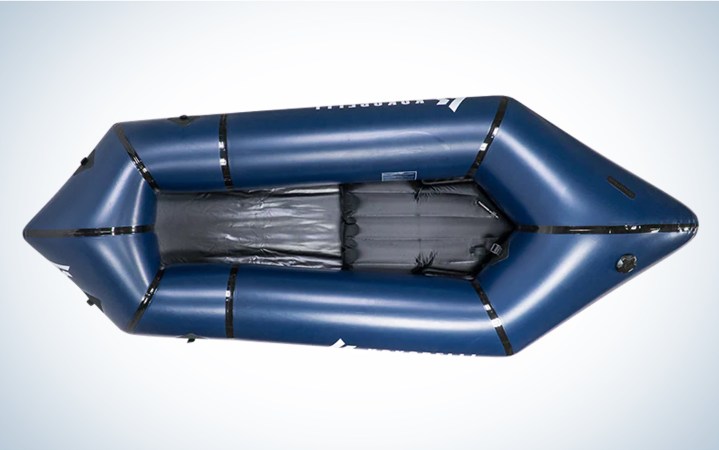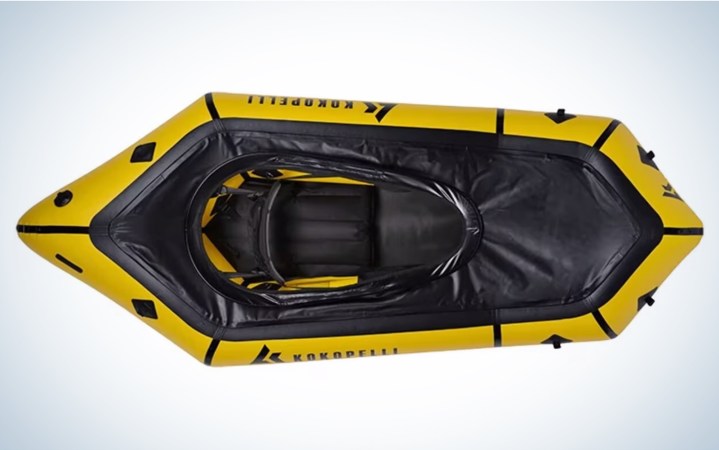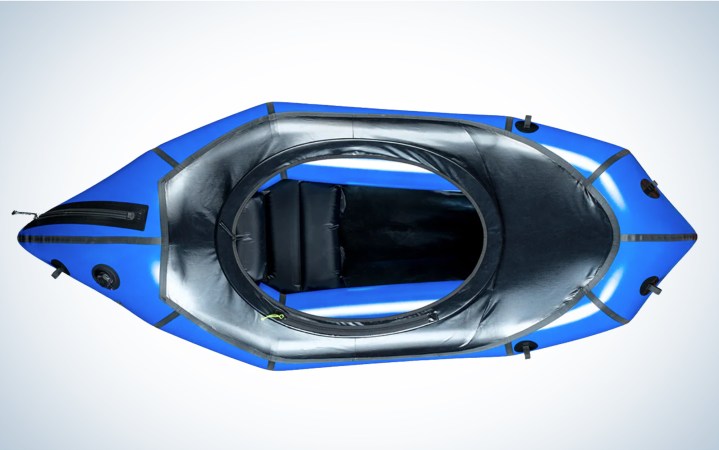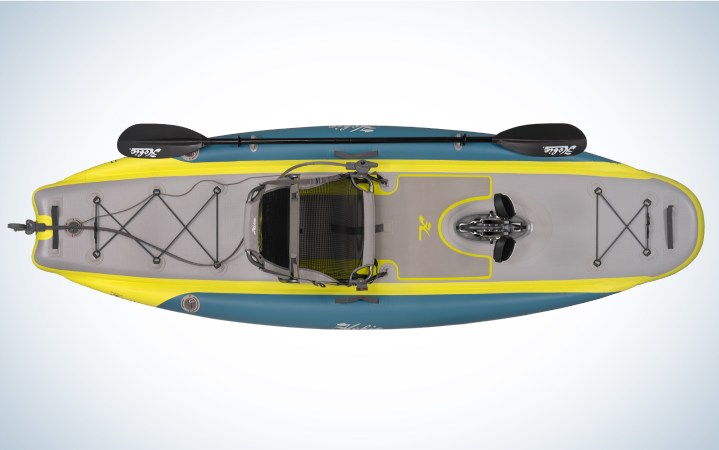We may earn revenue from the products available on this page and participate in affiliate programs. Learn More ›
If you don’t have a roof rack or a casual 10 feet of storage space, a kayak is out of the question. But with the best inflatable kayaks you can easily store and transport a personal boat, and maybe even a fleet for the family. Taking up closer to 3 feet of space and taking around 10 minutes to fill (depending on your method), it’s easier to get out on the water for paddling or fishing. I tested a variety of the top inflatable kayaks on alpine lakes and reservoirs to find which ones are the most reliable and comfortable.
- Best Overall: NRS Pike
- Best for Exploring: Oru Beach LT Sport
- Bote Zeppelin Aero 10′ Classic
- Best Packraft: Kokopelli Hornet Lite
- Best Packraft for Whitewater: Kokopelli Nirvana
- Alpackaraft Refuge
- Honorable Mention: Hobie Mirage iTrek 11
How I Tested the Best Inflatable Kayaks
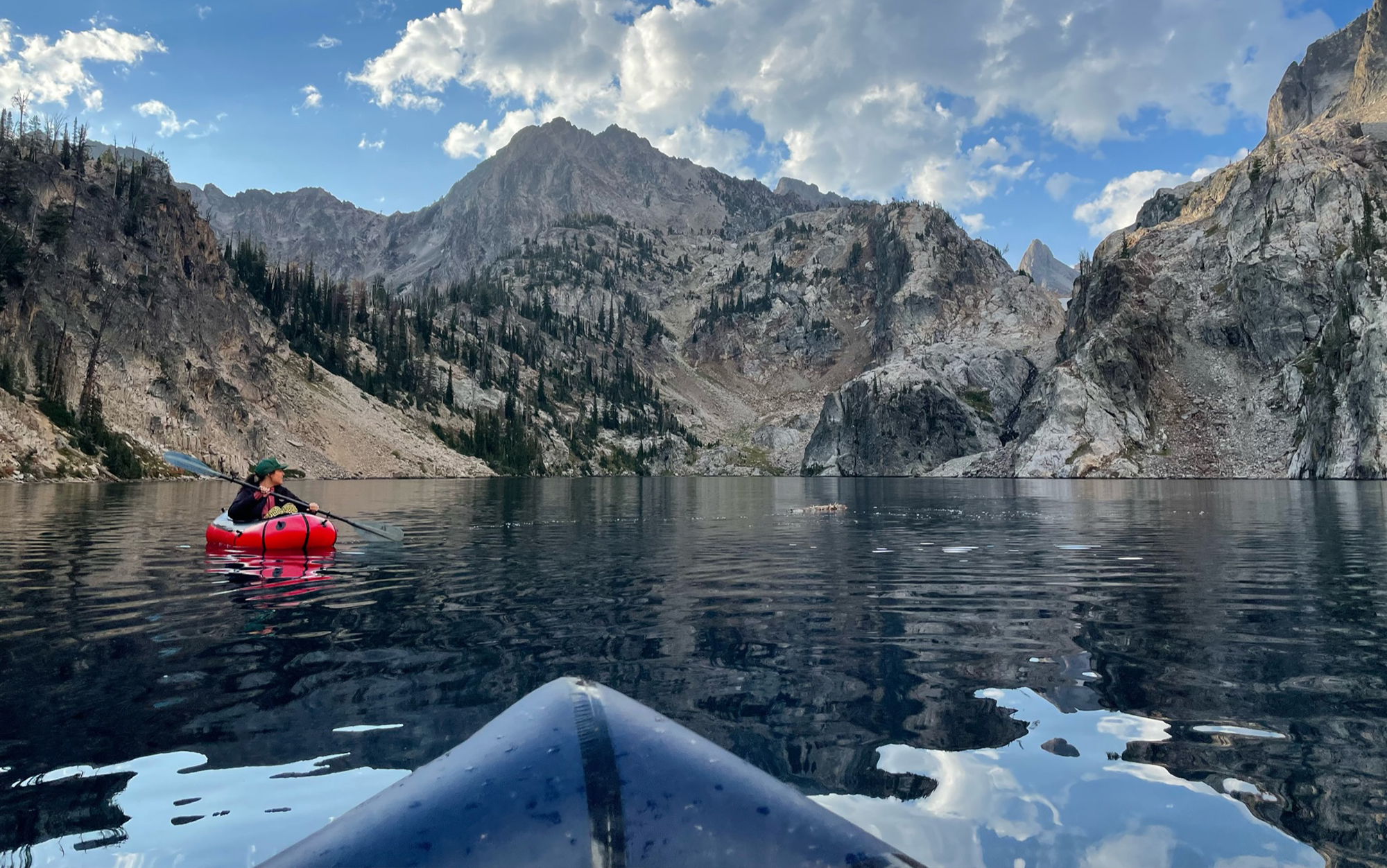
I included small, lightweight packrafts and inflatable kayaks closer in size to paddleboards in this test. Each is best suited for different activities, but serves the purpose of a personal boat that’s easy to store and transport. Packrafts allow you to explore more remote lakes and rivers. But the larger inflatable kayaks are more stable and comfortable for leisurely paddles. I evaluated them all on their inflation, maneuverability, weight, comfort, and deflation. I tested the majority of these boats on flat alpine lakes and reservoirs, but noted stability and tracking for use in current or slight chop.
Best Inflatable Kayaks: Reviews & Recommendations
Best Overall: NRS Pike
Best for Fishing
NRS Pike
Key Features
- Weight: 48 pounds
- Length: 12 feet, 8 inches
- Width: 38 inches
- Packed Size: 30 x 18 x 12 inches (measured)
- Weight Capacity: 375 pounds
- Integrated fish measuring board
- Rigid bow keel insert
- YakAttack accessory mounts
Pros
- Stable
- Durable
- Most comfortable seat
- Fishing accessories available
Cons
- Stiff footpegs are difficult to slip into tight PVC loops
The NRS Pike is convenient, comfortable, and ready to catch fish. But you don’t have to be an angler to enjoy the folding back seat, rigid keel, and respectable 8 PSI. The folding seat is the most comfortable seat on this list. And it keeps you elevated from the deck in case it somehow gets covered in beer, fish slime, or water. It also allows you to stand up more easily and you have increased visibility. The keel allows for great tracking and stability, even when standing. The bow and stern are also rigid for impressive maneuverability and speed.
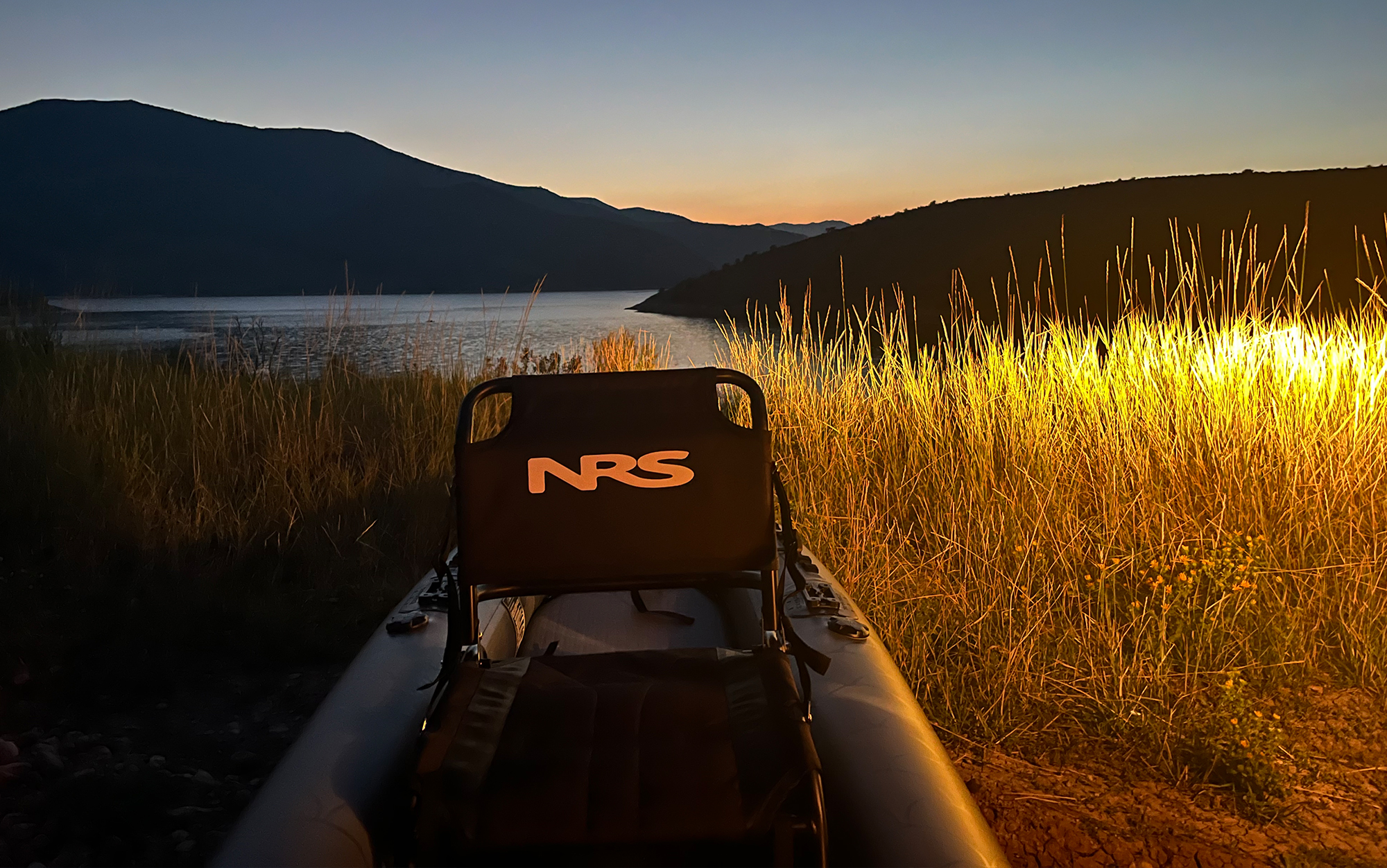
While paddleboards and the Bote kayak can recommend up to 15 PSI for the base, the Pike feels plenty stable at 8, which is a more achievable air pressure if you’re hand pumping. At 48 pounds, the Pike is lightweight enough to carry to the water and stable. There’s also plenty of room for gear with bungees on each end to hold it down.
The grippy foot section is nice for moving around or handling squirmy fish and there’s even a fish ruler. To pack this up properly, you’ll want to watch the deflation video. I fit it into the included backpack without it, but it’ll be easier and more compact if you follow the directions. There’s a 3-year warranty and it comes with a repair kit. Though, I’m confident in the durability. The EVA foam deck is designed to protect against hooks.
Best for Exploring: Oru Beach LT Sport
Best for Exploring
Oru Beach LT Sport
Key Features
- Weight: 28 pounds
- Length: 12 feet, 1 inch
- Width: 29 inches
- Packed Size: 33 x 13 x 29 inches
- Weight Capacity: 300 pounds
- Reflective decklines
- Rail system
Pros
- Fast
- Maneuverable
- Comfortable
Cons
- Need to memorize or download instructional video to assemble and store
- Tippy
While not an inflatable kayak, the Oru Beach LT Sport is an origami kayak that folds into a boat. The packaging includes a QR code for an instructional video that is no good to you at a lake without cell service. But it was intuitive enough that I was able to successfully fold and secure the thermoplastic into a boat shape. The material feels durable enough to resist punctures and abrasion, but it is frightening to manhandle into origami.
The boat tracks beautifully with speed. It’s maneuverable and has a very comfortable gel cushion seat. An open cockpit allows space for gear and stretching, but don’t rock the boat too much because without a fin or keel this boat is pretty tippy. The narrow design likely also contributes to the tippiness, but also why it paddles so well. However, the seamless deck construction means you’ll stay dry as long as you don’t dip the deck under. The all-black is a particularly sexy look and a rail system allows you to integrate accessories.
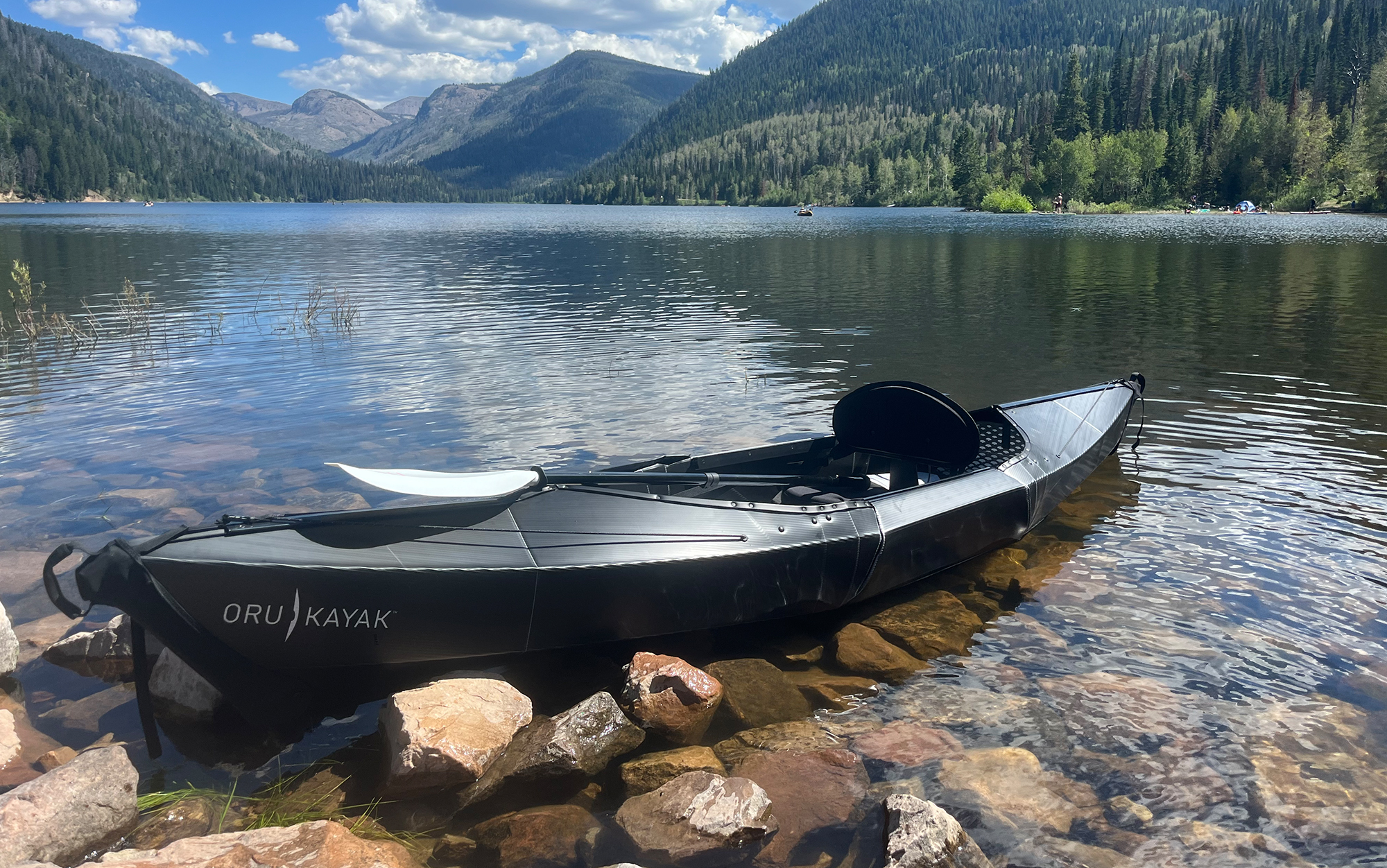
If set-up was relatively simple, folding it back into a 30-inch cube without instructions was nearly impossible. Actually, for me, it was impossible. I car-topped the half-constructed boat all the way home and had to watch the video (a couple times) and enlist a buddy to get it back into its storage shape. I wish Oru would include printed photo instructions, but if you practice at home first, you should be fine. You can fold it up yourself with some creativity. You have to kick in a section which is hard to do if the other side isn’t stable, but you could just push it up against a car or wall to hold it in place.
This boat is great for exploring. It’s a bullet on the water and doesn’t need to be babied in brush or shallow rocks. At 28 pounds it’s fairly light, and the 13-inch wide box is easy to store and transport. Plus there’s no deflating due to water temperature. Oru kayaks come with a 3-year warranty, which is pretty good considering they’re allegedly good for “tens of thousands” of folds.
Bote Zeppelin Aero 10′ Classic
Key Features
- Weight: 37.5 pounds
- Length: 10 feet
- Width: 38 inches
- Packed Size: 38.7 × 18 × 11 inches
- Weight Capacity: 300 pounds
- Rack accessory receivers
Pros
- Stable
- Spacious
- Velcro paddle straps
Cons
- You’ll want to purchase an electric pump
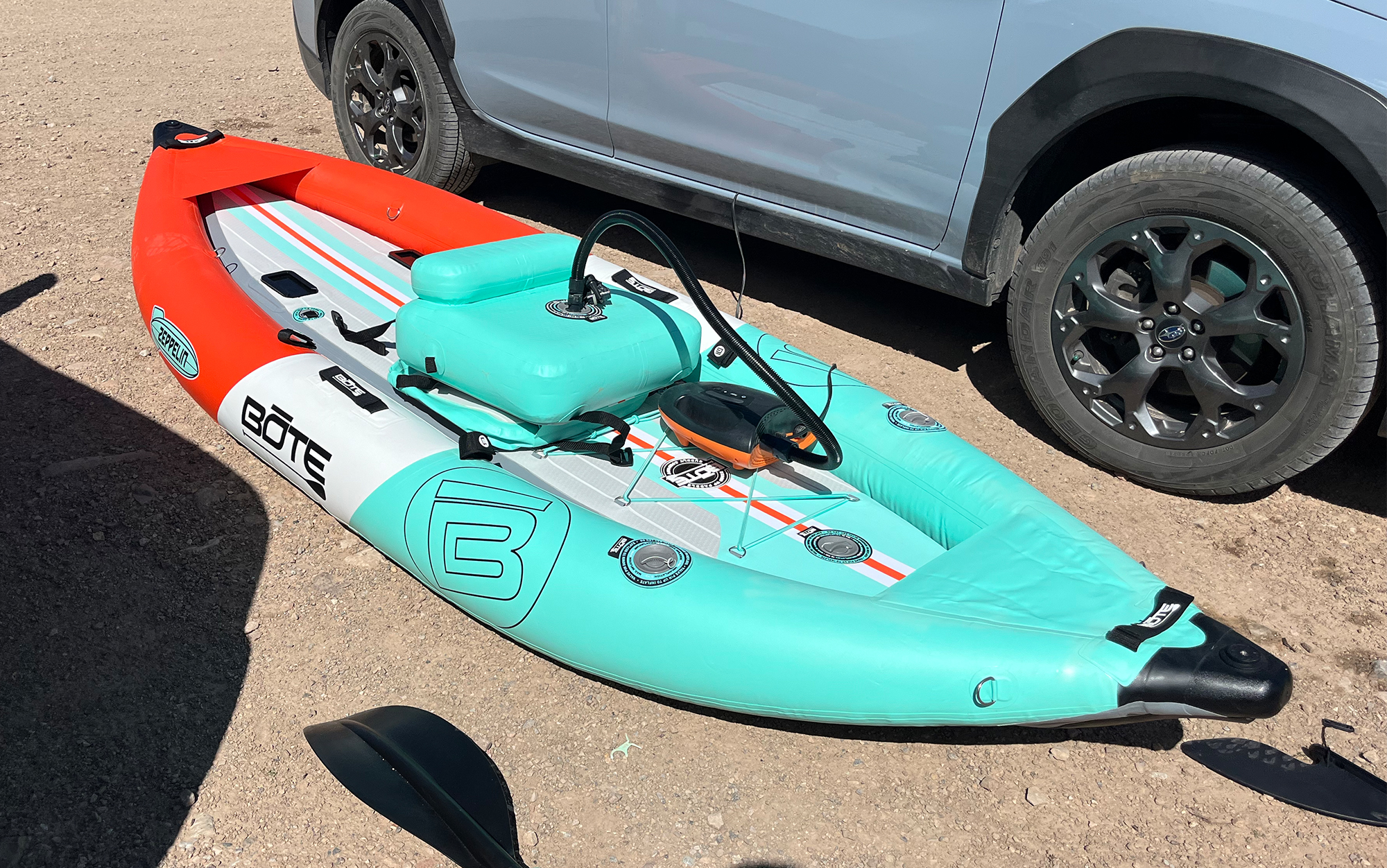
The Zeppelin is a spacious and stable inflatable kayak with a lot of features. The deck is magnetic, using MAGNEPOD technology to secure the brand’s magnetic drinkware and speakers. Rac receivers allow you to add tackle or bucket accessories, though the options are limited. Velcro paddle straps and bungees on the deck help with organization and there’s plenty of room for gear.
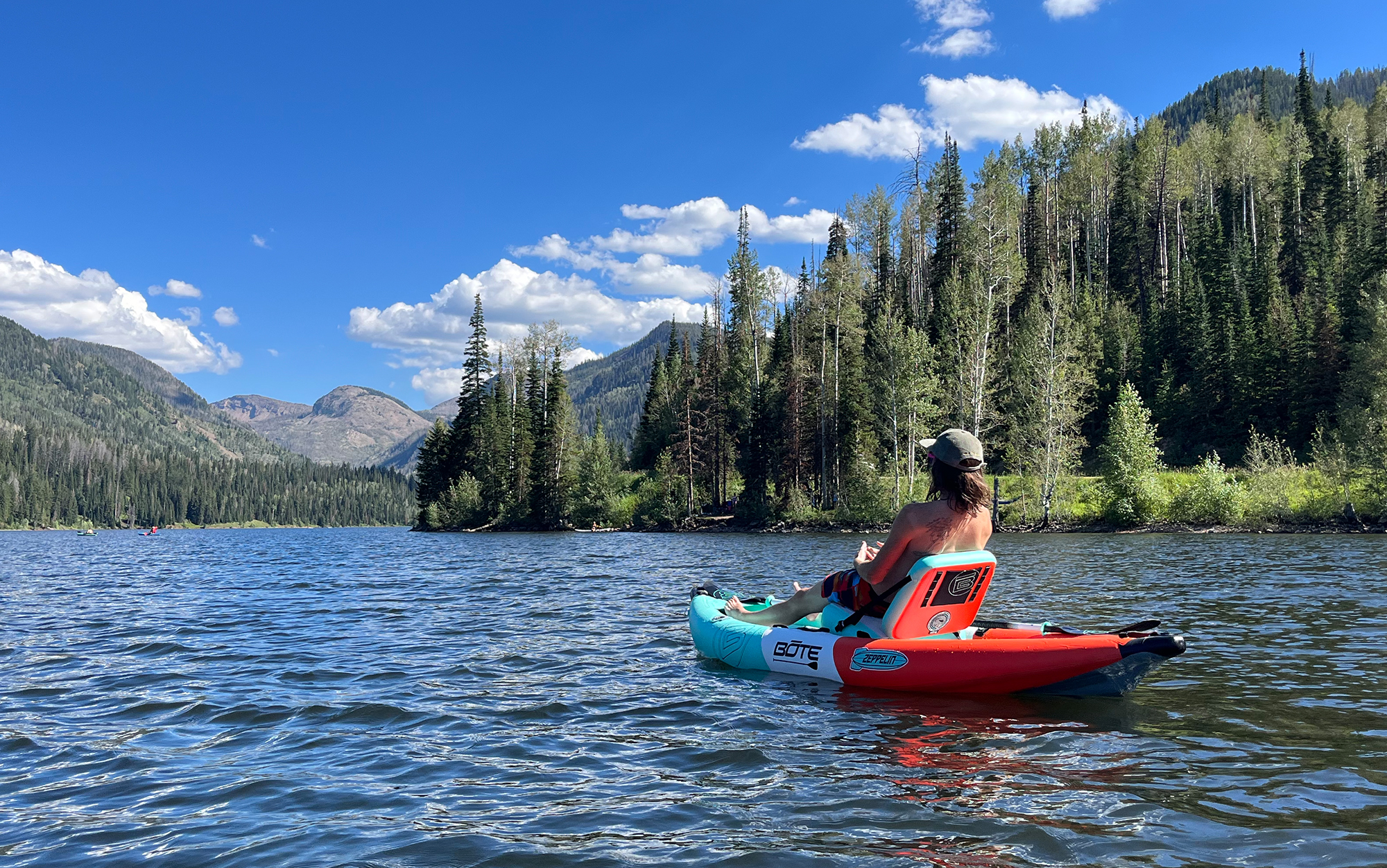
The seat also has to be inflated, though it doesn’t take long. It sits pretty high off the deck and feels a little awkward though not uncomfortable. The paddle features a comfortable and tactile grip and separates small enough to fit in the included backpack. I have broken some of the zipper tabs on the backpack, but the rest of the construction seems sturdy. At 15 PSI, you’ll want an electric pump to get it to the right air pressure. Hand pumping it is a real drag.
Best Packraft: Kokopelli Hornet Lite
Best Packraft
Kokopelli Hornet Lite
Key Features
- Weight: 5.8 pounds
- Boat Weight: 4.7 pounds
- Exterior Length: 85 inches
- Interior Length: 51 inches
- Exterior Width: 37 inches
- Inner Width: 16 inches
- Packed Size: 12 x 7 inches
- Weight Capacity: 300 pounds
Pros
- Sub-5 pounds
- Comfortable
- Packs down small
Cons
- Designed for flat water
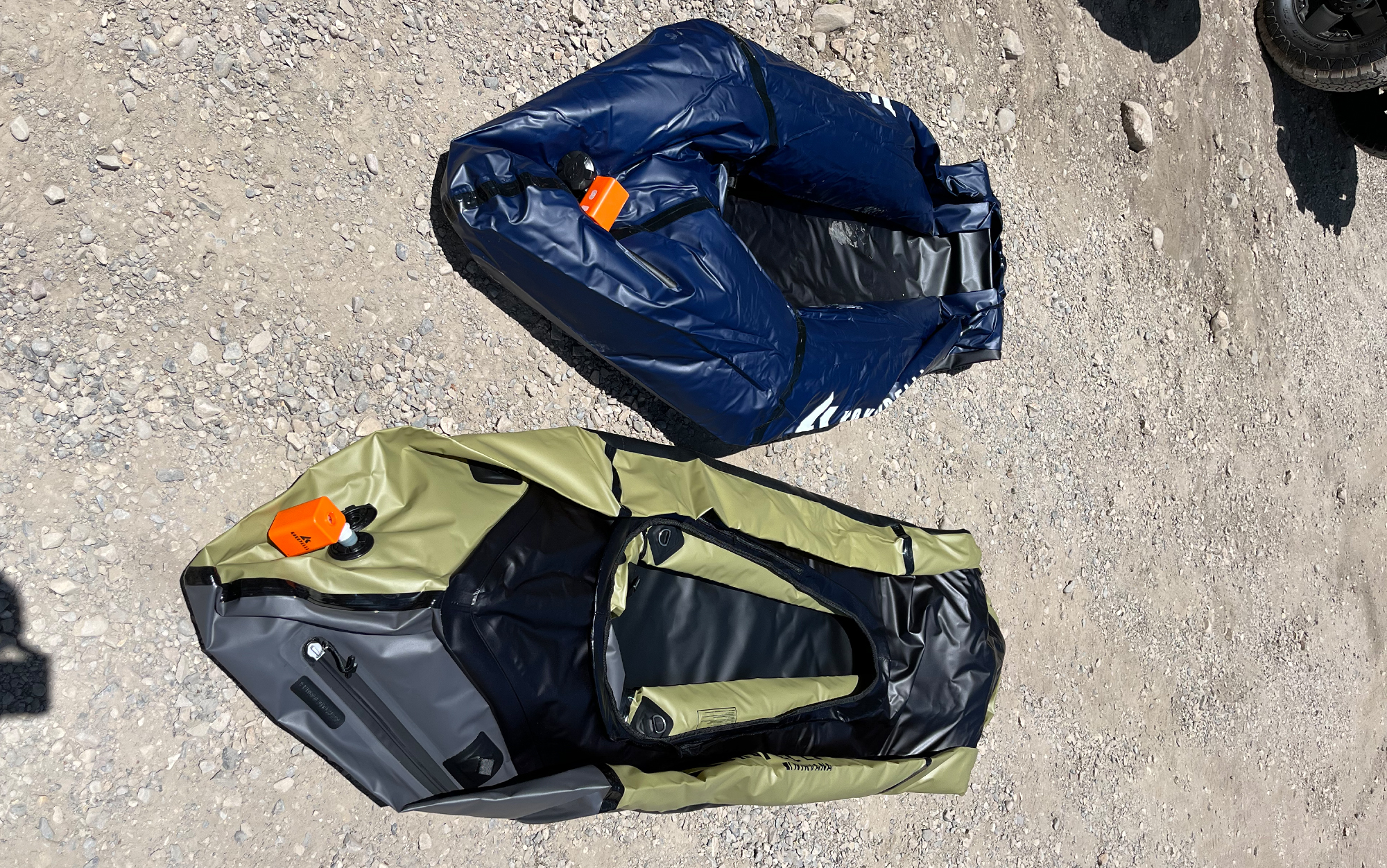
A packraft changes the floating game. First off, buy the pump. It weighs 6 ounces and has a 40-minute battery life. It’s incredibly useful for all kinds of inflatable things from your packraft to your sleeping pad. The inflatable seat can be filled up by mouth and attached with a strap and D-loop. With no fin, this kayak is very reactive, but with time you get the paddle stroke right so that you aren’t shifting as you paddle. The open deck means you can get splashed while paddling, but it also means you aren’t confined and you can really kick your feet up.
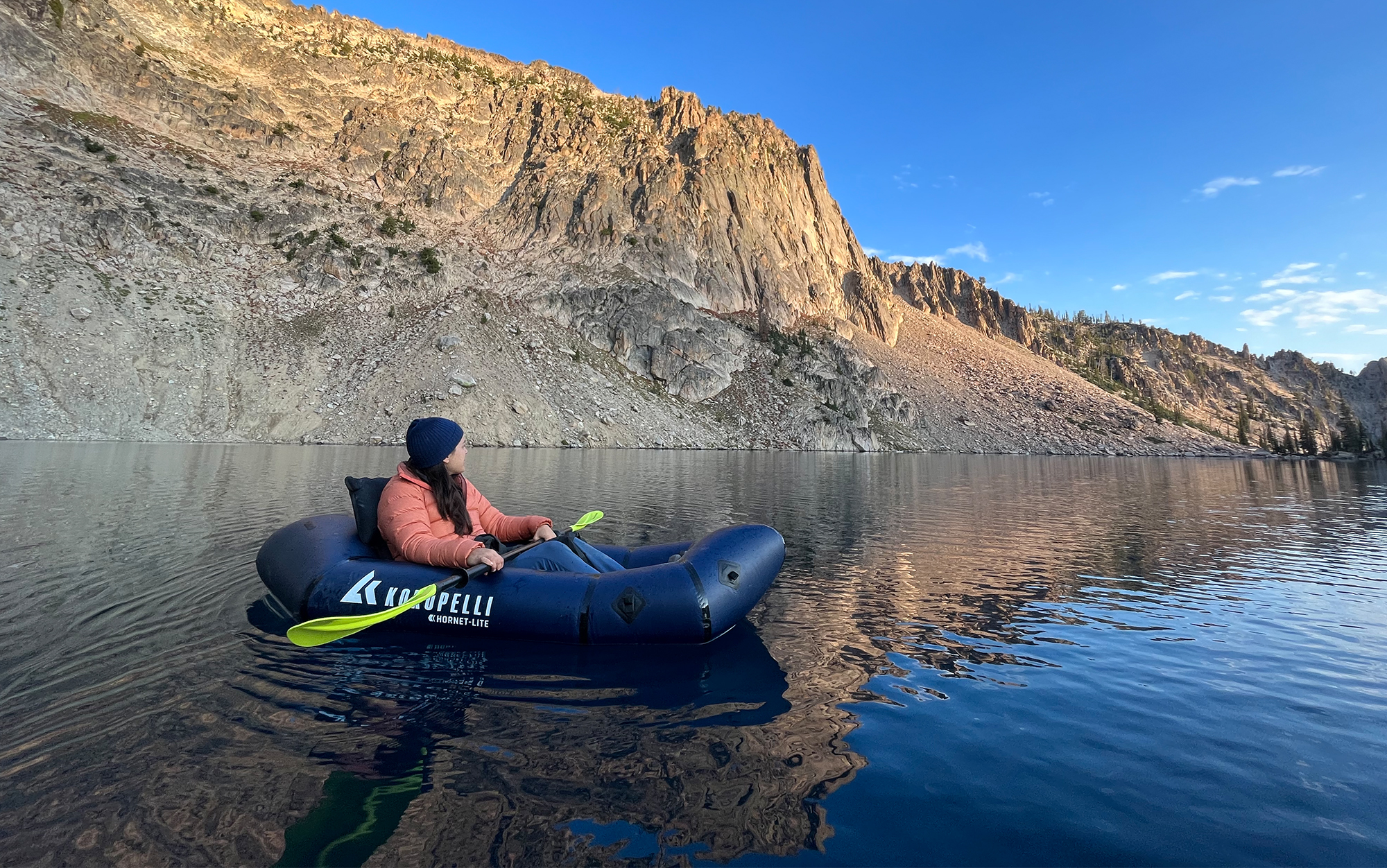
This summer I backpacked to some alpine lakes with this lightweight boat strapped to the top of my pack. It rolls up snuggly and the compression strap set is perfect for affixing to a backpack. The 201 denier floor and open deck makes it great for paddling with dogs, too. If you find yourself staring across a lake wondering what that waterfall or glacier looks like up close, a packraft will get you there. See a private beach you can’t access from land? Paddle there.
Best Packraft for Whitewater: Kokopelli Nirvana
Best Packraft for Whitewater
Kokopelli Nirvana
Key Features
- Weight: 12 pounds
- Boat Weight: 10 pounds
- Exterior Length: 90 inches
- Interior Length: 57 inches
- Exterior Width: 37 inches
- Inner Width: 16 inches
- Packed Size: 14 x 12 inches
- Weight Capacity: 300 pounds
- Cargo fly
Pros
- I can extend my legs
- Spray deck
- Can handle class III rapids
Cons
- Heavier
This packraft is bad ass. It’s technical. It’s durable. And it’s 10 pounds. There’s a cargo fly for you to store your gear, treating the boat like a giant dry(ish) bag. And it can handle class III rivers, dependent of course on your own skill. There’s an inflatable seat and backrest to keep you comfortable on long trips, and I can extend my legs fully. If you’re looking for adventure, this will find it. I took this raft down a class II river and it handled incredibly. There was room for a Yeti Hopper and I kicked my feet up on top of the deck to enjoy the sunshine.
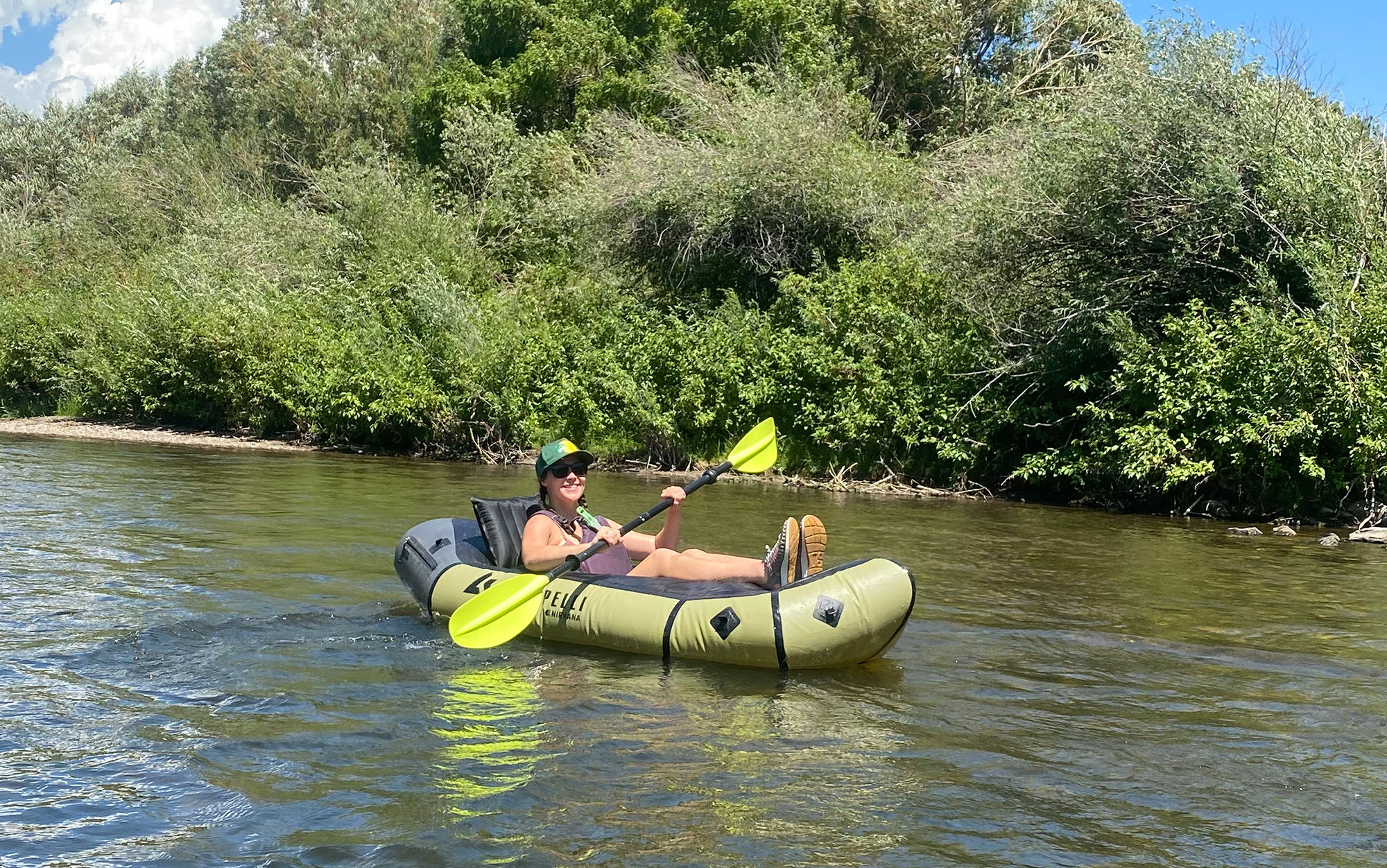
The floor is 840 denier and the pontoon is 210. Denier measures fabric thickness and I did not baby this boat. I pulled it on a rocky shore with a full cooler inside and hit rocks on my seat in shallow sections. I also rubbed against a wooden bridge during a rapid and was poked with stray sticks. Not a scratch on her. If you’re going for epic, this raft is it.
Alpackaraft Refuge
Alpackaraft Refuge
Key Features
- Weight: 5.8 pounds
- Exterior Length: 87 inches
- Interior Length: 26.5 inches
- Exterior Width: 34.5 inches
- Interior Width: 15 inches
- Packed Size: 15 x 7 inches
- Weight Capacity: 250 pounds
- Cargo fly
Pros
- Lightweight
- Spray deck
- Can handle class I-II and some lower class III rapids
Cons
- Can’t extend my legs
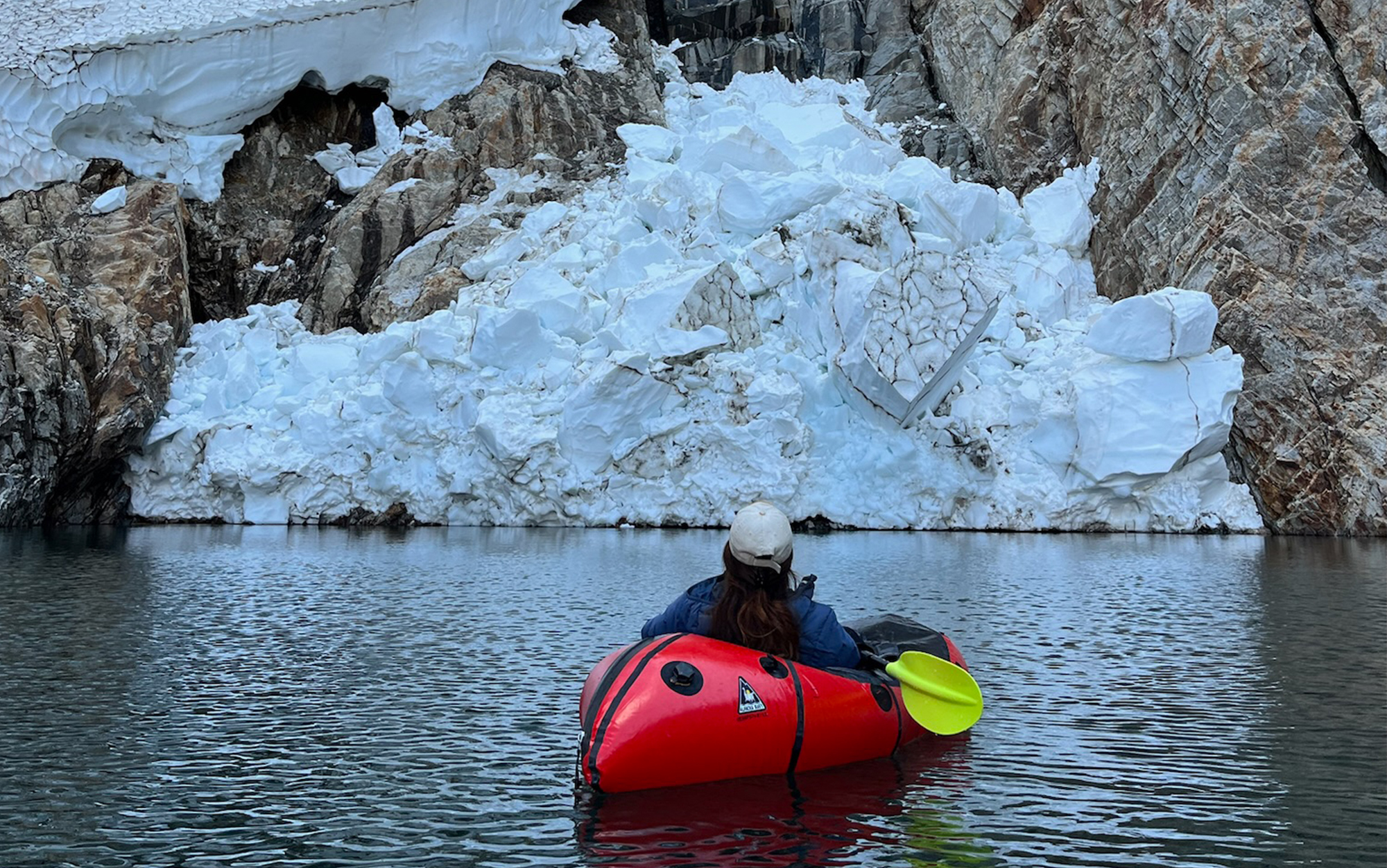
This is a compact and ultralight packraft that can handle class II rapids. If you’re looking to take a multi-day trip or traverse over water, there’s a cargo fly to store your gear. The backrest and seat are comfortable. It comes with a mesh bag for storage and packs up small. It’s quick and maneuverable, and I love the bright red. You won’t dread a portage quite as much as this boat is easy to move around. It features a spray deck and is compatible with a spray skirt for whitewater. The only thing I disliked about this model was the inability to extend my legs. While hard whitewater kayaks are designed for the paddler to sit on their knees for increased control, it doesn’t bode well for a long journey.
Honorable Mention: Hobie Mirage iTrek 11
Honorable Mention
Hobie Mirage iTrek 11
Key Features
- Weight: 28 pounds
- Fully Rigged Weight: 44 pounds
- Length: 10 feet, 8 inches
- Width: 40 inches
- Packed Size: 33.5 x 24.6 x 15.75 inches
- Weight Capacity: 400 pounds
- Roller duffle bag
- MirageDrive GT
- EVA standing pads
I was unable to test the Hobie Mirage, but for anglers interested in exploring their peddle kayak options, Hobie is a reliable choice. Cast away while using your feet to control your vessel. This is a popular, lightweight inflatable kayak with a drive system. There are also some attractive features like an included electric pump, raised aluminum seat, cup holders, and a rolling bag.
Things to Consider Before Buying the Best Inflatable Kayak
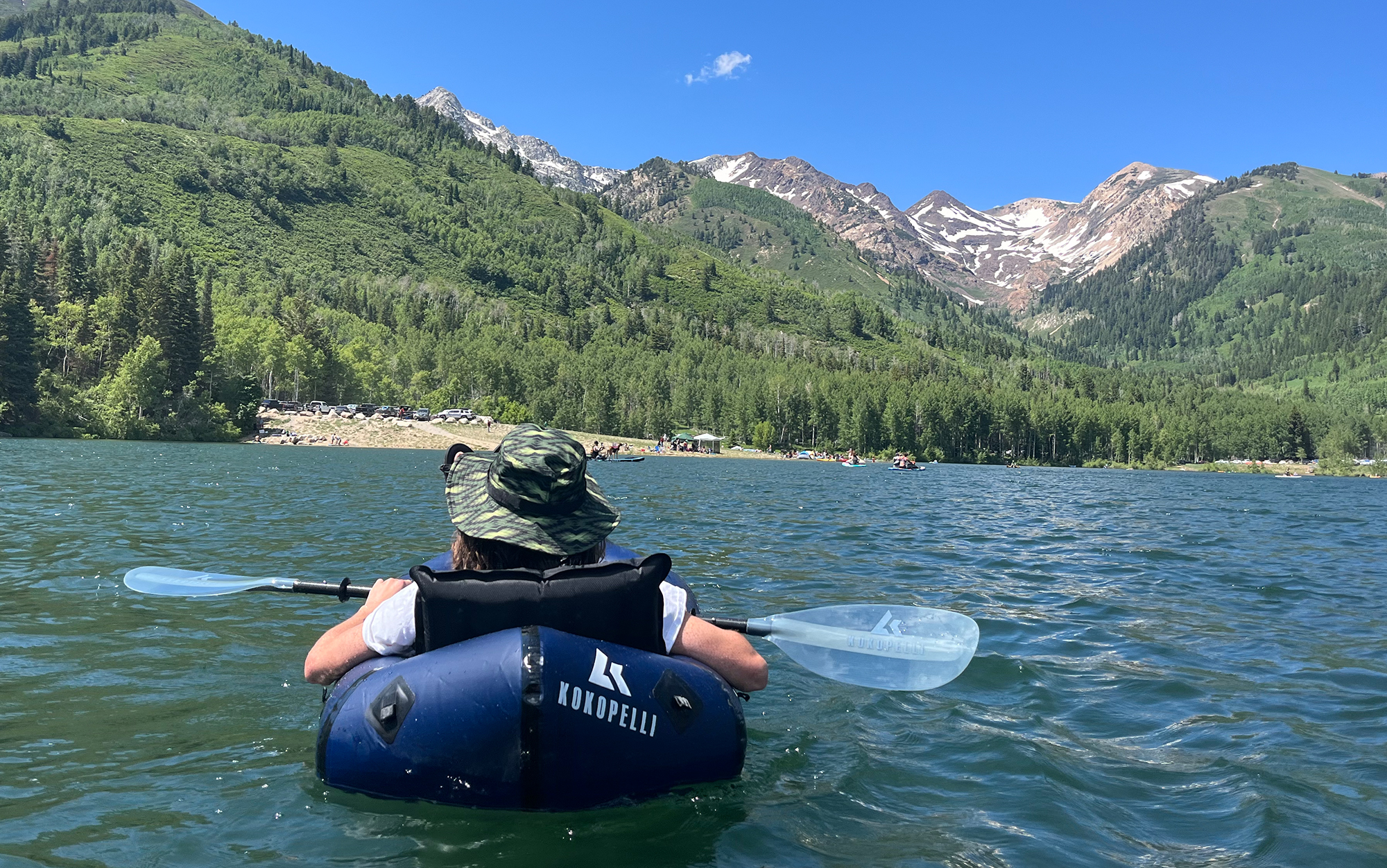
Packraft vs. Kayak
Packrafts are different from inflatable kayaks in that they’re designed to be carried on your back or bike to or from your destination. This varies from long trips with white water to fishing an alpine lake or exploring an area from a new perspective. Canyoneers will sometimes rappel into a canyon and packraft out. The possibilities are endless with a kayak you can carry on your back.
These crafts are tailored for different classes of rapids and adventures. Features include self-bailers, spray decks, cargo storage, and more. Top brands like Alpackaraft and Kokopelli offer a dizzying number of boats with varying features, weights, and sizes. I included the packraft category in this article, because, in my opinion, if you’re going to invest in an inflatable kayak, you should be aware of all the options. Packrafts are smaller and lighter to carry and store, and faster to inflate. And top models like the Kokopelli Hornet Lite are comfortable enough for a relaxed day, without taking up half your trunk space, which becomes an issue with multiple vessels involved.
Inflatable Kayaks are more durable, spacious, and stable. They’re also faster. The decision comes down to the body or bodies of water you frequent. If you’re floating the same rivers and lakes with access to your car, obviously the larger models will be more comfortable and stable.
Pump
Hand pumps are great; they’re cheap, simple to use, and sometimes the PSI gauge works. But if you need to get above 9 PSI, you’ll be hurting for an electric pump. Even with the packrafts boasting a PSI of 1, the electric pump gets you to about half (which is honestly enough in flat water) and you’ll have to finish it off by mouth. Take into account how much time and effort you’re willing to put into inflation when choosing the best inflatable kayak.
FAQs
Inflatable kayaks can be just as good as regular kayaks, meaning they track and maneuver just as well, and are stable. Depending on the kayaks, they can even be similar in weight. While, yes inflatable models can be punctured or torn, you can repair it. If you don’t have the space for a hard kayak, one of the best inflatable kayaks can be just as good.
The inflatable kayaks on this list that include a fin will be the most stable. This mitigates the side to side motion while paddling that can cause tipping.
Inflatable kayaks are easier to store and transport, making it easy to get on the water. If you choose a packraft, you’ll be able to explore more remote bodies of water.
Final Thoughts
Inflatable kayaks and packrafts pack down small and allow you to get your vessel to the water without towing or cartoping a full size hardshell boat. Each has their own pros and cons, but both enable you to get out on the water. Find the best inflatable kayak for you:
- Best Overall: NRS Pike
- Best for Exploring: Oru Beach LT Sport
- Bote Zeppelin Aero 10′ Classic
- Best Packraft: Kokopelli Hornet Lite
- Best Packraft for Whitewater: Kokopelli Nirvana
- Alpackaraft Refuge
- Honorable Mention: Hobie Mirage iTrek 11
